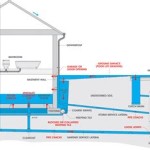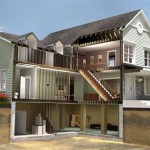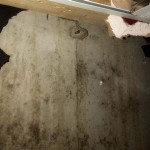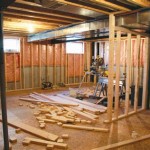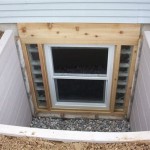Should I Insulate The Floor Above My Basement?
Insulating the floor above a basement, whether it is finished or unfinished, is a common consideration for homeowners. The decision to insulate this area involves weighing several factors, including energy efficiency, comfort, and the existing conditions of the basement and the home. Understanding the benefits, drawbacks, and practical considerations surrounding this type of insulation is crucial for making an informed choice.
Many older homes were built without floor insulation between the basement and the main living area. This was partially due to cost considerations at the time and a lesser understanding of the long-term energy implications. Modern building codes often mandate specific levels of insulation, but these requirements might not apply to existing structures unless significant renovations are undertaken. Therefore, homeowners in older properties, or those with insufficiently insulated newer homes, must evaluate the potential advantages of retrofitting their homes with insulation.
The primary driver for most homeowners considering insulation projects is to lower energy bills. Heat naturally rises, and in colder climates, a significant portion of the heat generated by a furnace can be lost through an uninsulated floor. Conversely, in warmer climates, cool air from air conditioning can be lost to the basement. Effective insulation acts as a thermal barrier, reducing the transfer of heat. This translates to the heating and cooling systems working less frequently and consuming less energy, leading to reduced monthly expenses.
Beyond energy savings, insulation also contributes to increased comfort within the home. A noticeable temperature difference between rooms, particularly between the main floor and the basement, can be indicative of poor insulation. Insulating the floor can help to even out temperature variations, making the floors warmer in the winter and cooler in the summer. This improved thermal comfort contributes to a more enjoyable living environment, reducing the need to constantly adjust thermostats to compensate for temperature disparities.
The type of basement also influences the decision. A finished basement, intended for living or recreational purposes, typically benefits more from floor insulation than an unfinished or solely storage-oriented basement. In a finished basement, temperature control and comfort are paramount, making insulation a more critical component of the overall design.
Key Point 1: Energy Efficiency and Cost Savings
The most compelling reason to insulate the floor above a basement is the potential for significant energy savings. An uninsulated floor allows for substantial heat transfer between the basement and the main living area. During the winter, heat escapes from the warmer living space into the cooler basement. This heat loss forces the furnace to work harder and longer to maintain the desired temperature, resulting in increased energy consumption and higher heating bills. In the summer, the opposite effect occurs: cool air conditioned for the living space is lost to the warmer basement, placing extra strain on the air conditioning system.
The effectiveness of floor insulation in reducing energy consumption depends on several factors, including the climate, the type of heating and cooling system, and the level of insulation installed. In regions with harsh winters or hot summers, the benefits of insulation are more pronounced. The higher the R-value of the insulation material, the greater its resistance to heat flow and the more effective it is at reducing energy loss. R-value is a measurement of thermal resistance, with higher numbers indicating better insulation performance. Local building codes often specify minimum R-values for insulation in various parts of a building, including floors.
While the initial cost of installing floor insulation may seem like a significant investment, the long-term savings on energy bills can often offset this expense. Considering the rising costs of energy, this type of insulation can pay for itself over time, making it a financially sound decision in the long run. Furthermore, many utility companies offer rebates or incentives for homeowners who invest in energy-efficient upgrades, such as insulation, which can further reduce the upfront cost of the project.
To accurately assess the potential energy savings, it is advisable to conduct an energy audit. An energy audit is a professional assessment of a home's energy efficiency, identifying areas where energy is being wasted and recommending specific improvements. The audit will typically include an analysis of insulation levels, air leakage, and the efficiency of heating and cooling systems. The results of the audit can provide valuable insights into the potential benefits of insulating the floor above the basement.
Key Point 2: Comfort and Noise Reduction
Beyond energy efficiency, floor insulation plays a crucial role in enhancing the comfort of the living space. An uninsulated floor can feel cold to the touch, particularly during the winter months. This can create an uncomfortable environment, especially for those who prefer to walk barefoot or have young children playing on the floor. Insulation provides a thermal barrier, preventing the cold air from the basement from reaching the floor surface, making it warmer and more comfortable.
The improvement in comfort contributes to a more enjoyable living environment. Insulating the floor can eliminate cold spots and drafts, creating a more consistent and comfortable temperature throughout the house. This is particularly beneficial for families with young children or elderly individuals who are more sensitive to temperature fluctuations.
In addition to thermal comfort, floor insulation can also provide soundproofing benefits. Insulation materials, particularly those with high density, can absorb sound waves, reducing the transmission of noise between the basement and the main living area. This is especially important for finished basements that are used as entertainment rooms, home offices, or bedrooms. Insulating the floor can help to minimize noise disturbances, creating a quieter and more peaceful living environment.
The noise reduction benefits of floor insulation can be significant, especially in multi-story homes or homes with active basements. Insulation can help to dampen sounds such as footsteps, music, and conversations, making it easier to relax and concentrate. This is particularly important for individuals who work from home or have sensitive hearing.
Key Point 3: Practical Considerations and Installation
Before installing floor insulation, several practical considerations should be taken into account. The first step is to assess the existing condition of the basement and the floor above. Ensure that the basement is dry and free from moisture problems, as moisture can damage insulation and reduce its effectiveness. Address any leaks or water intrusion issues before proceeding with the insulation project.
The type of insulation material to use depends on several factors, including the desired R-value, the available space, and the budget. Common types of insulation materials for floors include fiberglass batts, rigid foam boards, and spray foam insulation. Fiberglass batts are a cost-effective option and are relatively easy to install. Rigid foam boards provide a higher R-value per inch than fiberglass and are often used in areas with limited space. Spray foam insulation offers excellent thermal performance and can fill gaps and cracks, creating an airtight seal. However, it is generally more expensive than other types of insulation.
The installation process will vary depending on the type of insulation material chosen. Fiberglass batts can be installed between the floor joists, while rigid foam boards can be attached to the underside of the subfloor. Spray foam insulation requires professional installation, as it involves specialized equipment and techniques. It is essential to follow the manufacturer's instructions and local building codes when installing floor insulation.
In some cases, it may be necessary to remove the existing flooring to install insulation. This can be a significant undertaking, but it may be necessary to achieve the desired level of insulation. Consider the cost and effort involved in removing and replacing the flooring when making the insulation decision.
Proper ventilation is also crucial when insulating the floor above a basement. Ensure that the basement has adequate ventilation to prevent moisture buildup. Moisture can lead to mold growth and can damage the insulation and the structure of the floor. Consider installing a dehumidifier to control humidity levels in the basement.
Finally, it is important to consult with a qualified contractor or insulation specialist before starting the project. A professional can assess the specific needs of the home and recommend the best type of insulation and installation method. They can also ensure that the installation is done correctly and safely, maximizing the benefits of the insulation.

Should I Insulate My Basement Constellation

Insulating And Finishing An Old Basement Floor Fine Homebuilding

3 Tips For Cold Floors Above Crawl Spaces Basements

Installing Rigid Foam Above A Concrete Slab Greenbuildingadvisor

Insulation Between Basement And First Floor Why It Matters For Your Home 1 800 Remodel

Where To Insulate In A Home Department Of Energy

Sealing And Insulating Existing Floors Above Unconditioned Spaces Code Compliance Brief Building America Solution Center

What S The Best Way To Insulate A Basement Slab Greenbuildingadvisor

What Is Basement Ceiling Insulation And It Worth

Floor Above Unconditioned Basement Or Vented Crawlspace Building America Solution Center

